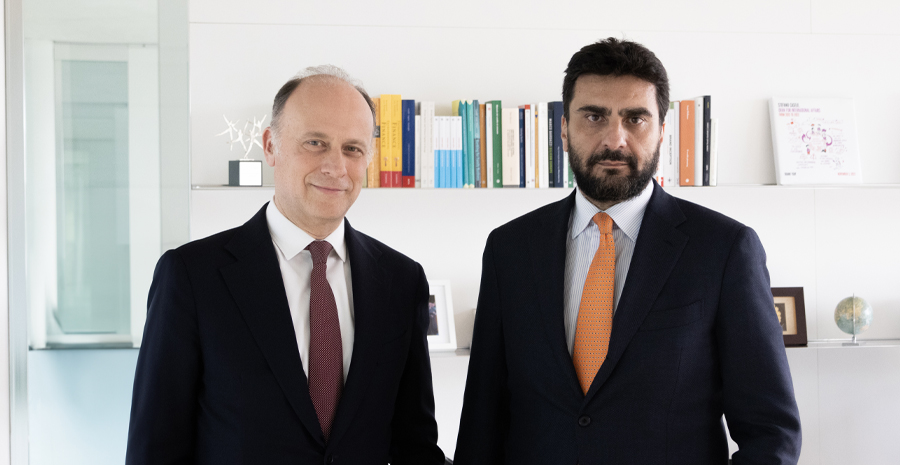
- Start date
- Duration
- Format
- Language
- 2 Dic 2025
- 4,5 days
- Class
- Italian
Escalating complexity in managing art and cultural organizations, the need to achieve commercial success, and the huge economic and organizational hurdles arising from the recent Covid-19 pandemic: all this means managers in the sector are facing daunting new challenges.
A targeted managerial approach, beyond engendering a proactive, mindful attitude of the reality of their organization and the sector as a whole, requires models and tools that support and guide managers in their decisions. The aim to make decision-making processes more effective and efficient, at the same time generating value.
This is the crux of the argument in the book Managing the Cultural Business. Avoiding Mistakes, Finding Success, curated by Andrea Rurale, Director of the Master in Arts Management and Administration (MAMA) at SDA Bocconi School of Management, and Michela Addis, Professor of Economics and Management at Roma Tre University.
We met with Andrea Rurale to talk about how this book came about, in light of what’s been happening over the past year on the healthcare front, and the impact that this emergency has had on the art & culture sector.
You started working on the book before the Covid-19 pandemic. How has this health emergency shaped the reflections you make?
The book was inspired by the experience of MAMA. In fact, all the teachers and researchers who curated the different chapters collaborate in the master program in various areas. So it’s a synthesis of the research they’ve done in various areas of managerial know-how, which has become more and more pertinent as the pandemic goes on. To deal with the changes arising from the different ways people are relating to art, organizations have had to rethink their business models, and only the ones that have read the situation with a critical eye have been able to respond.
What are the most common mistakes in the art & culture sector that your book tries to correct?
All the mistakes that the different chapters focus on can be traced back to common sources: the lack of a strategic approach. And the general view that that artistic-cultural context is a sector where creativity, ingenuity, and at times improvisation can sometimes function not only on the stage, or when we create a work of art, but also in the control room, in other words, places where what we really need to do instead is to analyze problems and come up with effective solutions. So this is the reason why, when we talk about the impact of culture, we’re mistakenly thinking in economic terms, and not about social aspects or collective well-being. Or we think that fundraising is only about collecting money for a project, forgetting about what comes before and after the donation…
The customer-centric concept emerges emphatically in the book. What do you mean by that? How does it apply in the artistic-cultural context?
In a cultural context, we realize the best way to interpret ‘customer-centric’ – which has been a key concept in the evolution of marketing for some time now – when we put people at the center of everything we do. Exposure to art is good for us, as many studies show. But this assumption isn’t enough to facilitate the interaction between individuals and art in every possible way. Today the stimuli each of us is subject to every day are countless, and time to dedicate to beauty - to visit a museum or go to the theater – is becoming limited. If we don’t cultivate young people, and other people who don’t acquire a passion for beauty from their family or from school, art and culture will always be for a select few. A museum shouldn’t only speak to experts or art lovers, but to novices too, people who’ve never set foot in a museum. At the same time cultural spaces have to continue working on educating the community, encouraging people to dig deeper if they feel the need. These activities that place people, visitors, the public at the center, can only by activated with a strategic approach, the outcome of analyzing the ‘audience,’ making the best decisions and monitoring results.
How do you see the artistic-cultural sector evolving in this difficult time? and what strategies should be adopted to survive in the post-Covid-19 world?
The pandemic has shown us that without public subsidies, the arts and culture sector will not survive. We have to consider it a basic necessity, one that the State has to support. If not, we’ll gradually watch as museums, theaters, and archeological sites close down. At the same time, the pandemic has noticeably widened the gap between those few institutions that have developed managerial competencies to face unexpected scenarios and those that are waiting passively for State handouts and help. What we need are skills, clear recognition of the role in of management in the sector, along with indispensable artistic and cultural expertise of the people who run theaters and museums. We need the capacity to analyze data, to forecast scenarios and to respond rapidly to changing market conditions, by taking a proactive approach.
SDA Bocconi School of Management



This course aims to focus on essential leadership skills that are deemed vital in navigating the dynamic organizational landscape.

